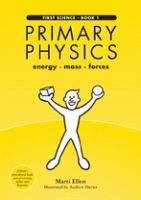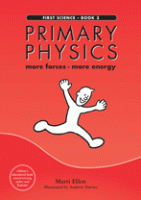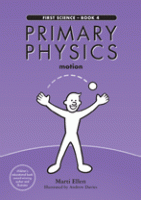Our Philosophy
Physics is a subject for all children to study. Everyone begins to investigate the physical world as soon as they are born. All children explore the physical laws, whether through learning to walk, dropping things off high chairs, playing with balls on a playground, or hanging from monkey bars. It is a natural part of their development. Our task in presenting physics formally is to introduce a sequence of activities which lead them to consciously discover what has come instinctively up to this point.
Book 1 • energy – mass – forces
When a child begins its experience of the physical world it is aware of the energy around it. It discovers mass and the properties of mass. It begins to orient itself to the physical world, touching and reaching out. Then, through its daily experiences, the forces of gravity and friction gradually become real. As the child begins to walk, it learns how to control its body under the influence of gravity and it gains an intuitive understanding of the concept of mass and of its own centre of mass. The process of achieving this introduces the force of friction, in the form of a skinned knee! Book 1 is comprised of activities on energy, mass and forces.
Book 2 • simple machines
The work of small children is carried out using their toys – balls, cars, dolls with limbs that rotate and move, gears, things that turn, things you pull, see-saws and playground toys to name a few. Simple machines are the toys of children; they discover the principles of how they work through their play.
Book 3 • more forces, more energy
In Book 3, we use children’s natural curiosity to help them answer some basic questions. They have been introduced to forces and energy in Book 1 (the ‘what’). In Book 2, we use energy and forces in each experiment. The children gain more experience. They also use objects with which they are familiar. In Book 3 (more forces, more energy), children are encouraged to begin to seek ‘how’?. They are shown demonstrations or carry out simple described experiments themselves. These experiments lead them to answer questions. Then, an important part, they are asked to extend themselves to look for how their experiences in physics lessons are a part of their everyday lives (Where else have you seen or experienced this?).
Book 4 • motion
In Book 4, the topics of discovery are Newton’s laws of motion. Early natural philosophers such as Sir Isaac Newton led the way toward our modern understanding of the physical world. Newton’s work on the theory of gravitation simplified the problems of his day. He found a way to explain that the movement of bodies on earth and in space follow the same laws. For this and other works Newton has been highly honoured.
Nature, and Nature’s laws lay hid in night.
God said, Let Newton be! and all was light.
– Alexander Pope
The inspiration for this book comes from the Principia, Newton’s work on the theory of gravitation. The lessons are hands-on and follow the topics Newton studied. Also included are many concepts on which to expand in the further study of science: drawing conclusions based on experimentation; following procedures; measurement; and taking viewpoints outside of everyday thinking. These processes, which Newton himself used in his day, continue to be used by scientists today. The story of motion, based on Newton’s laws, is the topic of this book. There are many questions in science which are elusive and difficult to explain. This one, Newton’s theory of gravitation has a very clear lesson and should be taught because it is such a beautiful example of scientific discovery.



